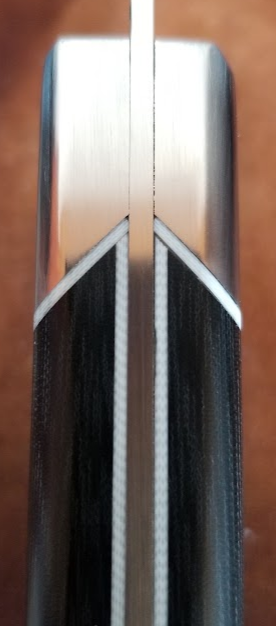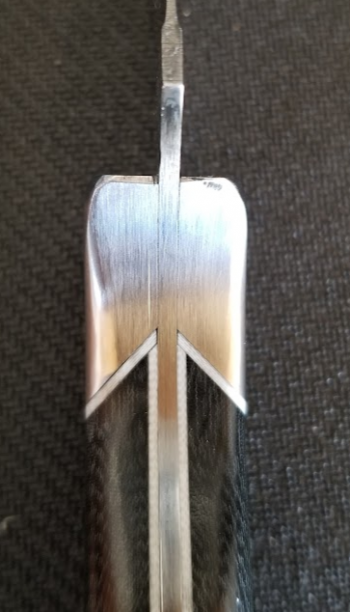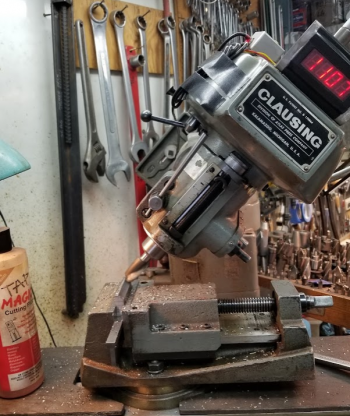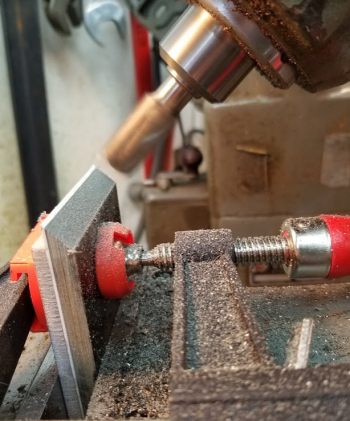MTBob
Well-Known Member
I finally took the plunge and tried my first pinned dovetailed stainless bolsters on a steak knife (photos later). To get the bolsters initially positioned, I epoxied the bolsters onto the blade. Before glue setup I removed and cleaned the pins, then tapering the pin holes, smashing the pins with a press, then peened the pin heads, and finished surfaces. The pins are invisible and the finish on the 416 SS is superb, hoorah!
But, I notice a very very small line between the blade and the bolster, at the spine and bottom of the bolster. I was hoping that the blade and bolster would finish out appearing as one piece, with no visible line.
Now I'm wondering if I should have skipped the glue step and directly mounted the bolster on the blade with only the pins. If I do that, I'm a little unclear how I'd keep the bolsters in place and tight to the blade while pressing and peening the pins.
Suggestions?
(PS: I made the mistake of asking my wife if she wanted a set of steak knives. The answer - yes. But, crap, she wants 10!)
But, I notice a very very small line between the blade and the bolster, at the spine and bottom of the bolster. I was hoping that the blade and bolster would finish out appearing as one piece, with no visible line.
Now I'm wondering if I should have skipped the glue step and directly mounted the bolster on the blade with only the pins. If I do that, I'm a little unclear how I'd keep the bolsters in place and tight to the blade while pressing and peening the pins.
Suggestions?
(PS: I made the mistake of asking my wife if she wanted a set of steak knives. The answer - yes. But, crap, she wants 10!)






